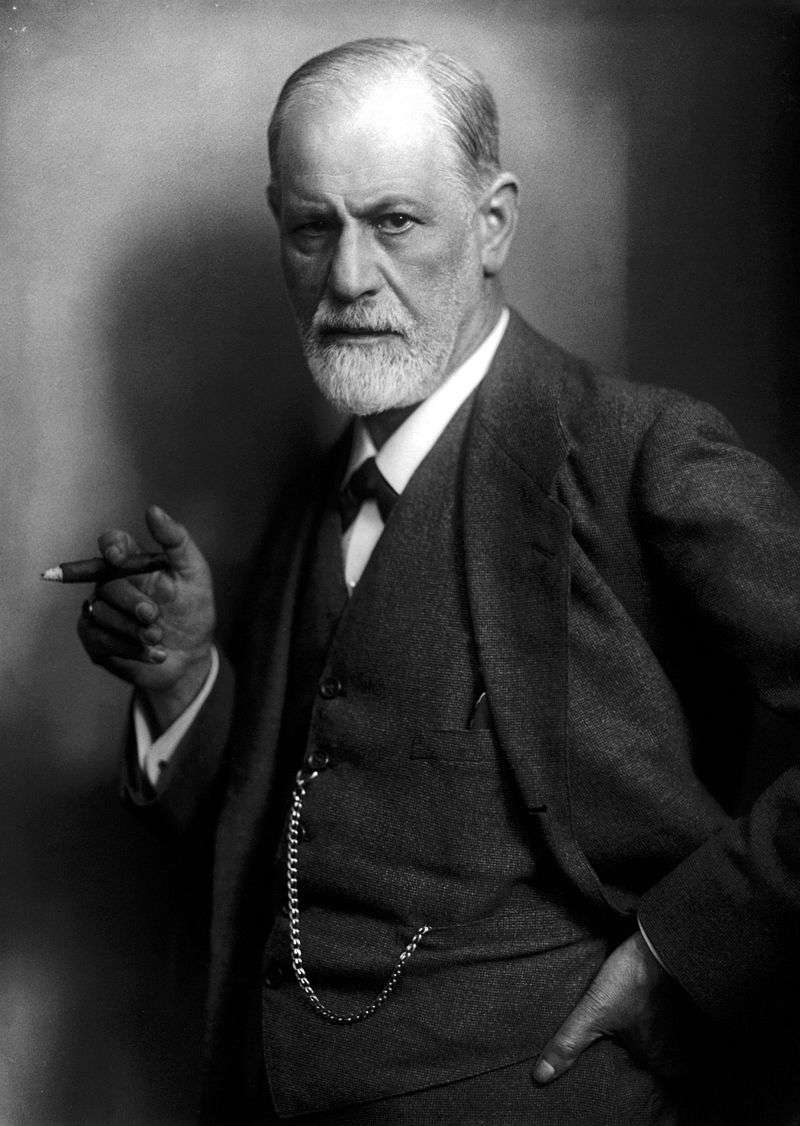Key Difference – Psychoanalytic vs Psychodynamic
In psychology, psychoanalytic and psychodynamic are two words that can often be confusing as most people tend to use these interchangeably. But there is a key difference between psychoanalytic and psychodynamic. Psychoanalytic refers to the perspective and theoretical ideas that were originated by Sigmund Freud. Psychodynamic refers to the ideas and perspective that came from Sigmund Freud and his followers. As you can see psychoanalysis is the original creation of a psychological perspective which enables the psychologist to focus on the human mind. Psychodynamic theories drew inspiration from psychoanalysis.
What is Psychoanalytic?
Psychoanalysis refers to the theoretical basis that includes a specific approach, theories, and techniques that assist the psychologist to comprehend the human mind. These were founded by Sigmund Freud through his clinical work. In psychoanalysis, Freud spoke of many important concepts. Some of the key concepts that he emphasized on are the role of the unconscious, defense mechanisms, dreams, the id, ego and superego, etc. He specifically believed that the unconscious was important when understanding the human mind. He believed that all our fears and desires are restrained in the unconscious. This idea was also used in psychoanalytic therapy to treat patients who suffer from depression and anxiety disorders. Freud emphasized that by making the unconscious thoughts known, the patients can be treated.
Freud’s ideas of the human psyche are also interesting. He explains this through three components of id, ego, and superego. Id operates on the pleasure principle. Superego operates on the morality principle. Ego moderates id and superego and tries to create a balance so that he satisfies the demands of id in a socially acceptable manner. Other than these Freud came up with psychosexual stages of development as well. As you can see, the contribution of Freud to psychology is immense. His theoretic concepts not only created psychoanalysis but laid the foundation for psychodynamic perspective as well.

What is Psychodynamic?
Psychodynamic refers an approach or perspective of psychology that studies the human mind. The specialty is that psychodynamic approach emphasizes the role of the unconscious above all. It explains how human behavior, thoughts, and emotions are influenced by the unconscious. The foundation for psychodynamic perspective lies in the work of Sigmund Freud although later on this was developed by the works of his followers such as Carl Jung, Alfred Adler, Melanie Klein, John Bowlby and Mary Ainsworth.
Psychodynamic therapy also focuses on the inner conflict that the individual experiences, and attempts to relieve this tension that the individual feels as a cure for the illness. Here, the psychologist tries to bring the repressed emotions, behavior, etc. to the conscious so that the problem can be identified.

What is the difference between Psychoanalytic and Psychodynamic?
Definitions of Psychoanalytic and Psychodynamic:
Psychoanalytic: Psychoanalytic refers to the perspective and theoretical ideas that were originated by Sigmund Freud.
Psychodynamic: Psychodynamic refers to the ideas and perspective that came from Sigmund Freud and his followers.
Characteristics of Psychoanalytic and Psychodynamic:
Theories:
Psychoanalytic: Psychoanalysis is solely founded by Sigmund Freud.
Psychodynamic: Psychodynamic theories are founded by Freud and his followers.
Focus:
Psychoanalytic: Psychoanalysis focuses on the psyche, unconscious, dreams, etc.
Psychodynamic: Psychodynamic approach also focuses on the human mind and personality and tries to broaden the understanding.
Contribution:
Psychoanalytic: The main contributor or the founder was Sigmund Freud.
Psychodynamic: Sigmund Freud, Carl Jung, Alfred Adler, Melanie Klein, John Bowlby and Mary Ainsworth are some psychologists who have contributed to the development of Psychodynamic approach.
Image Courtesy:
1. “Sigmund Freud LIFE” by Max Halberstadt [Public Domain] via Commons
2. Alfred Adler (1870-1937) Austrian psychiatrist [Public domain], via Wikimedia Commons
Psychodynamic and psychoanalytic theories acknowledge the importance of unconscious psychological processes and childhood experiences. Both are also closely associated with Sigmund Freud, the founder of psychoanalysis. They expound on the manifestations of defense mechanisms, free association, dream analysis, inner conflicts, etc. Hence, a number of sources use these terms interchangeably. However, psychodynamic perspective covers the theories and approaches based on Freud and his followers (who may have later contradicted him) while psychoanalytic perspective specifically pertains to the original theories and therapeutic approach of Freud.

What is Psychodynamic?
Psychodynamic perspective refers to the therapeutic approach and theories developed by Freud and supported by his followers such as the neo-Freudians (though they disagreed with some of his concepts); they generally deemphasized sex and gave more importance to the influence of social environment. Some of them are:
Carl Jung
Jung was a Swiss psychiatrist who was Freud’s protégé. His theory is called “Analytical Psychology”; he met Freud in 1907, they were impressed with each other’s work and developed a close friendship. In fact, Freud viewed Jung as his intellectual heir. However, Jung broke away from Feud in 1913 due to their differing concepts. He thought that Freud’s theory of the unconscious was too negative and incomplete. For instance, Jung proposed that there was a deeper and transpersonal form of unconscious called the “collective unconscious” which is manifested by universal symbols. Freud then dismissed Jung’s interest in myths as being unscientific.
Alfred Adler
Adler was an Austrian psychiatrist, his theory is called “Individual Psychology”. He was the first president of the Vienna Psychoanalytical Society; hence, he was a part of Freud’s inner circle of colleagues. Instead of sexual and aggressive urges, Adler believed that we are driven by feelings of inferiority in childhood and that people should be studied as a whole. Because of his disagreements with Freud, Adler left the society, taking one third of the members with him.
Karen Horney
Horney was a German psychoanalyst who also questioned some of Freud’s theories. She is credited for her feminist psychology; Horney disagreed with Freud’s concept of “penis envy” ( young girls experience anxiety when they realize that they do not have a penis). She stated that men experience “womb envy”, that men are actually envious of women’s ability to bear children.
According to the American Psychological Association (2017), psychodynamic therapy is an in-depth form of talk therapy which is usually delivered once a week (and is usually briefer than the traditional psychoanalytic therapy). Aside from looking into the unconscious and past experiences, this approach also considers the impact of the external world. This is also known as “insight-oriented therapy” which is the oldest type of modern therapy (Embogama, 2016).

What is Psychoanalytic?
Psychoanalytic perspective refers to theories and therapeutic methods which are based on the original works of Freud, an Austrian neurologist. The term “psychoanalysis” was coined by Freud in 1896. His interest in the unconscious mind was spurred by the case of “Anna O.” who got cured when her repressed memories were uncovered (Ackerman, 2020). The basic assumptions of this approach include:
- Psychological problems are rooted in the unconscious.
- Treatments focus on bringing the repressed conflict to consciousness.
- Personality is largely influenced by childhood experiences.
- Individuals employ defense mechanisms against threatening information from the unconscious.
- The mind is composed of the id, ego, and superego.
- Dreams are the royal road to the unconscious.
- All tension is due to the increase of libido and that all pleasure is derived from its discharge.
Psychoanalytic therapy usually takes place several times a week with the patient on a couch (American Psychological Association, 2017). It is based on Freud’s psychoanalytic theories and is generally more intensive and lasts longer than psychodynamic therapy.
Difference between Psychodynamic and Psychoanalytic
Theorists
Psychoanalytic perspective refers to theories and therapeutic methods which are based on the original works of Freud, who coined the term “psychoanalysis” in 1896. On the other hand, psychodynamic perspective refers to the therapeutic approach and theories developed by Freud and supported by his followers such as the neo-Freudians (Jung, Adler, Horney, Erikson, Klein, etc.).
Focus
Psychodynamic perspective generally deemphasizes sex and gives more importance to the influence of social environment. On the contrary, the psychoanalytic perspective gives more importance to the influence of the libido.
Therapy
Psychodynamic therapy is an in-depth form of talk therapy which is usually delivered once a week (APA, 2017). Aside from looking into the unconscious and past experiences, this approach also considers the impact of the external world. This is also known as “insight-oriented therapy” which is the oldest type of modern therapy (Embogama, 2016). In comparison, psychoanalytic therapy usually takes place several times a week with the patient on a couch (APA, 2017). It is based on Freud’s psychoanalytic theories and is generally more intensive and lasts longer than psychodynamic therapy.
Psychodynamic vs Psychoanalytic

Summary
- Psychodynamic and psychoanalytic theories acknowledge the importance of unconscious psychological processes and childhood experiences.
- Psychodynamic perspective refers to the therapeutic approach and theories developed by Freud and supported by his followers such as the neo-Freudians.
- Psychoanalytic perspective refers to theories and therapeutic methods which are based on the original works of Freud.
- Psychodynamic perspective generally deemphasizes sex and gives more importance to the influence of social environment.
- As compared to psychoanalytic therapy, psychodynamic therapy is less intense and briefer. It also considers the impact of the external world and does not necessarily use the iconic couch.
The Psychodynamic Approach
Psychodynamic Approach
By Saul McLeod, updated 2020
Take-home Messages
- The psychodynamic theory is a psychological theory Sigmund Freud (1856-1939) and his later followers applied to explain the origins of human behavior.
- The psychodynamic approach includes all the theories in psychology that see human functioning based upon the interaction of drives and forces within the person, particularly unconscious, and between the different structures of the personality.
- Sigmund Freud’s psychoanalysis was the original psychodynamic theory, but the psychodynamic approach as a whole includes all theories that were based on his ideas, e.g., Carl Jung (1912), Melanie Klein (1921), Alfred Adler (1927), Anna Freud (1936), and Erik Erikson (1950).
- The words psychodynamic and psychoanalytic are often confused. Remember that Freud’s theories were psychoanalytic, whereas the term ‘psychodynamic’ refers to both his theories and those of his followers.
- Freud’s psychoanalysis is both a theory and therapy.
Sigmund Freud (writing between the 1890s and the 1930s) developed a collection of theories which have formed the basis of the psychodynamic approach to psychology.
His theories are clinically derived – i.e., based on what his patients told him during therapy. The psychodynamic therapist would usually be treating the patient for depression or anxiety related disorders.
Basic Assumptions
Our behavior and feelings are powerfully affected by unconscious motives:
The unconscious mind comprises mental processes that are inaccessible to consciousness but that influence judgments, feelings, or behavior (Wilson, 2002).
According to Freud (1915), the unconscious mind is the primary source of human behavior. Like an iceberg, the most important part of the mind is the part you cannot see.
Our feelings, motives, and decisions are actually powerfully influenced by our past experiences, and stored in the unconscious.
Our behavior and feelings as adults (including psychological problems) are rooted in our childhood experiences:
Psychodynamic theory states that events in our childhood have a great influence on our adult lives, shaping our personality. Events that occur in childhood can remain in the unconscious, and cause problems as adults.
Personality is shaped as the drives are modified by different conflicts at different times in childhood (during psychosexual development).
All behavior has a cause (usually unconscious), even slips of the tongue. Therefore all behavior is determined:
Psychodynamic theory is strongly determinist as it views our behavior as caused entirely by unconscious factors over which we have no control.
Unconscious thoughts and feelings can transfer to the conscious mind in the form of parapraxes, popularly known as Freudian slips or slips of the tongue. We reveal what is really on our mind by saying something we didn’t mean to.
Freud believed that slips of the tongue provided an insight into the unconscious mind and that there were no accidents, every behavior (including slips of the tongue) was significant (i.e., all behavior is determined).
Personality is made up of three parts (i.e., tripartite): the id, ego, and super-ego:
The id is the primitive and instinctive component of personality. It consists of all the inherited (i.e., biological) components of personality present at birth, including the sex (life) instinct – Eros (which contains the libido), and the aggressive (death) instinct – Thanatos.
The ego develops in order to mediate between the unrealistic id and the external real world. It is the decision making component of personality.
The superego incorporates the values and morals of society which are learned from one’s parents and others.
Parts of the unconscious mind (the id and superego) are in constant conflict with the conscious part of the mind (the ego). This conflict creates anxiety, which could be dealt with by the ego’s use of defense mechanisms.
History of Psychodynamic Theory
The History of Psychodynamic Theory
- Anna O a patient of Dr. Joseph Breuer (Freud’s mentor and friend) from 1800 to 1882 suffered from hysteria.
- In 1895 Breuer and his assistant, Sigmund Freud, wrote a book, Studies on Hysteria.
In it they explained their theory: Every hysteria is the result of a traumatic experience, one that cannot be integrated into the person’s understanding of the world. The publication establishes Freud as “the father of psychoanalysis.
- By 1896 Freud had found the key to his own system, naming it psychoanalysis. In it, he had replaced hypnosis with “free association.”
- In 1900 Freud published his first major work, The Interpretation of Dreams, which established the importance of psychoanalytical movement.
- In 1902 Freud founded the Psychological Wednesday Society, later transformed into the Vienna Psychoanalytic Society.
- As the organization grew, Freud established an inner circle of devoted followers, the so-called “Committee” (including Sàndor Ferenczi, and Hanns Sachs (standing) Otto Rank, Karl Abraham, Max Eitingon, and Ernest Jones).

- Freud and his colleagues came to Massachusetts in 1909 to lecture on their new methods of understanding mental illness. .
Those in attendance included some of the country’s most important intellectual figures, such as William James, Franz Boas, and Adolf Meyer.
- In the years following the visit to the United States, the International Psychoanalytic Association was founded. .
Freud designated Carl Jung as his successor to lead the Association, and chapters were created in major cities in Europe and elsewhere. .
Regular meetings or congresses were held to discuss the theory, therapy, and cultural applications of the new discipline.
- Jung’s study on schizophrenia, The Psychology of Dementia Praecox, led him into collaboration with Sigmund Freud.
- Jung’s close collaboration with Freud lasted until 1913. Jung had become increasingly critical of Freud’s exclusively sexual definition of libido and incest. .
The publication of Jung’s Wandlungen und Symbole der Libido (known in English as The Psychology of the Unconscious) led to a final break.
- Following his emergence from this period of crisis, Jung developed his own theories systematically under the name of Analytical Psychology. .
Jung’s concepts of the collective unconscious and the archetypes led him to explore religion in the East and West, myths, alchemy, and later flying saucers.
- Melanie Klein took psychoanalytic thinking in a new direction by recognising the importance of our earliest childhood experiences in the formation of our adult emotional world. .
After becoming a full member of the Berlin Psychoanalytic Society in 1923, Klein embarks upon her first analysis of a child. .
Extending and developing Sigmund Freud’s ideas, Klein drew on her analysis of children’s play to formulate new concepts such as the paranoid-schizoid position and the depressive position.
- Anna Freud (Freud’s daughter) became a major force in British psychology, specializing in the application of psychoanalysis to children. .
Among her best known works are The Ego and the Mechanism of defense (1936).
Psychodynamic Summary
Psychodynamic Approach Summary
Strengths
It has given rise to one of the first “talking cure,” psychoanalysis, on which many psychological therapies are now based.
It could be argued that Freud was the first person to highlights the importance of childhood in mental health and this is an idea extensively used today.
The Psychodynamic approach takes into account both sides of the Nature/Nurture debate.
Freud claimed that adult personality is the product of innate drives- i.e., natural motivations or urges we are born with- and childhood experiences- i.e., the way we are raised and nurtured.
Limitations
Ignores mediational processes (e.g., thinking)
The psychodynamic approach places too much emphasis on the psychological factors, without considering the biological/genetic factors that influence and contribute to mental health problems.
Too deterministic (little free-will)
Unfalsifiable (difficult to prove wrong)
Case Studies – Subjective / Cannot generalize results
Simplifying the human mind into the id, ego, and superego and the five psychosexual stages make the approach reductionist.
Issues and Debates
Issues and Debates
Free will vs Determinism
It is strongly determinist as it views our behavior as caused entirely by unconscious factors over which we have no control.
Nature vs Nurture
The psychodynamic approach recognises the influence of social factors as it argues that we are driven by innate biological instincts, represented by the Id (nature), but the ways these instincts are expressed is shaped by our social and cultural environment (nurture).
Holism vs Reductionism
The psychodynamic approach is determinist as it rejects the idea of free will. A person’s behavior is determined by their unconscious motives which are shaped by their biological drives and their early experiences.
Idiographic vs Nomothetic
Freud argued that human behavior is governed by universal processes that apply to everyone e.g. the tripartite structure of the mind (nomothetic).
However, he also proposed that the ways in which these processes manifest themselves in the individual is unique (idiographic).
Are the research methods used scientific?
The concepts proposed by Freud cannot be tested empirically. The theory is not falsifiable as if people behave in the way predicted by the theory it is viewed as support, if they don’t it is argued that they are using defence mechanisms.
Critical Evaluation
Critical Evaluation
The psychodynamic approach has given rise to one of the first “talking cure”, psychoanalysis, on which many psychological therapies are now based. Psychoanalysis is rarely used now in its original form but it is still used in a shorter version in some cases.
The greatest criticism of the psychodynamic approach is that it is unscientific in its analysis of human behavior. Many of the concepts central to Freud’s theories are subjective, and as such, difficult to test scientifically.
For example, how is it possible to scientifically study concepts like the unconscious mind or the tripartite personality? In this respect, it could be argued that the psychodynamic perspective is unfalsifiable as its theories cannot be empirically investigated.
However, cognitive psychology has identified unconscious processes, such as procedural memory (Tulving, 1972), automatic processing (Bargh & Chartrand, 1999; Stroop, 1935), and social psychology have shown the importance of implicit processing (Greenwald & Banaji, 1995). Such empirical findings have demonstrated the role of unconscious processes in human behavior.
Kline (1989) argues that psychodynamic theory comprises a series of hypotheses, some of which are more easily tested than others, and some with more supporting evidence than others.
Also, while the theories of the psychodynamic approach may not be easily tested, this does not mean that it does not have strong explanatory power.
Nevertheless, most of the evidence for psychodynamic theories is taken from Freud’s case studies (e.g., Little Hans, Anna O).
The main problem here is that the case studies are based on studying one person in detail, and with reference to Freud, the individuals in question are most often middle-aged women from Vienna (i.e., his patients). This makes generalizations to the wider population (e.g., the whole world) difficult.
Another problem with the case study method is that it is susceptible to researcher bias. Reexamination of Freud’s own clinical work suggests that he sometimes distorted his patients’ case histories to ‘fit’ with his theory (Sulloway, 1991).
The humanistic approach makes the criticism that the psychodynamic perspective is too deterministic. Freud suggests that all thoughts, behaviors and emotions are determined by our childhood experiences and unconscious mental processes.
This is a weakness because it suggests we have no conscious free will over our behavior, leaving little room for the idea of personal agency (i.e., free will).
Finally, the psychodynamic approach can be criticized for being sexist against women. For example, Freud believed that females’ penis envy made them inferiour to males.
He also thought that females tended to develop weaker superegos and to be more prone to anxiety than males.
Is there a difference between psychodynamic and psychoanalytic?
The words psychodynamic and psychoanalytic are often confused. Remember that Freud’s theories were psychoanalytic, whereas the term ‘psychodynamic’ refers to both his theories and those of his followers.
What is psychodynamic in simple terms?
Sigmund Freud highlights the role of the unconscious mind, the structure of personality and the influence that childhood experiences have on later life. Freud believed that the unconscious mind determines most of our behavior and that we are motivated by unconscious emotional drives.
How to reference this article:
How to reference this article:
McLeod, S. A. (2017). Psychodynamic approach. Simply Psychology. www.simplypsychology.org/psychodynamic.html
APA Style References
Adler, A. (1927). Understanding human nature. New York: Greenburg.
Bargh, J. A., & Chartrand, T. L. (1999). The unbearable automaticity of being. American psychologist, 54(7), 462.
Erikson, E. H. (1950). Childhood and society. New York: Norton.
Freud, A. (1936). Ego & the mechanisms of defense.
Freud, S., & Breuer. J. (1895). Studies on hysteria. In Standard edition (Vol. 2, pp. 1–335).
Freud, S. (1896). Heredity and the etiology of the neuroses. In Standard edition (Vol. 3, pp. 142–156).
Freud, S. (1900). The interpretation of dreams. In Standard edition (Vols. 4 & 5, pp. 1–627).
Freud, S. (1909). Notes upon a case of obsessional neurosis. In Standard edition (Vol. 10, pp. 153–249).
Freud, S. (1909). Analysis of a phobia of a five year old boy. In The Pelican Freud Library (1977), Vol 8, Case Histories 1, pages 169-306.
Freud, S. (1915). The unconscious. SE, 14: 159-204.
Freud, A. (1936). The Ego and the Mechanisms off Defense. International Universities Press, Inc.
Greenwald, A. G., & Banaji, M. R. (1995). Implicit social cognition: attitudes, self-esteem, and stereotypes. Psychological review, 102(1), 4.
Jung, C. G. (1907). Ueber die Psychologie der Dementia praecox. Psychological Bulletin, 4(6), 196-197.
Jung, C. G. (1912). Wandlungen und Symbole der Libido: Beiträge zur Entwicklungsgeschichte des Denkens. F. Deuticke.
Jung, C. G., et al. (1964). Man and his Symbols, New York, N.Y.: Anchor Books, Doubleday.
Kline, P. (1989). Objective tests of Freud’s theories. Psychology Survey, 7, 127-45.
Stroop, J. R. (1935). Studies of interference in serial verbal reactions. Journal of experimental psychology, 18(6), 643.
Sulloway, F. J. (1991). Reassessing Freud’s case histories: The social construction of psychoanalysis. Isis, 82(2), 245-275.
Tulving, E. (1972). Episodic and semantic memory. In E. Tulving & W. Donaldson (Eds.), Organization of Memory, (pp. 381–403). New York: Academic Press.
Wilson, T. D. (2004). Strangers to ourselves. Harvard University Press.
How to reference this article:
How to reference this article:
McLeod, S. A. (2017). Psychodynamic approach. Simply Psychology. www.simplypsychology.org/psychodynamic.html
Home
|
About Us
|
Privacy Policy
|
Advertise
|
Contact Us
Back to top
Simply Psychology’s content is for informational and educational purposes only. Our website is not intended to be a substitute for professional medical advice, diagnosis, or treatment.
© Simply Scholar Ltd – All rights reserved




